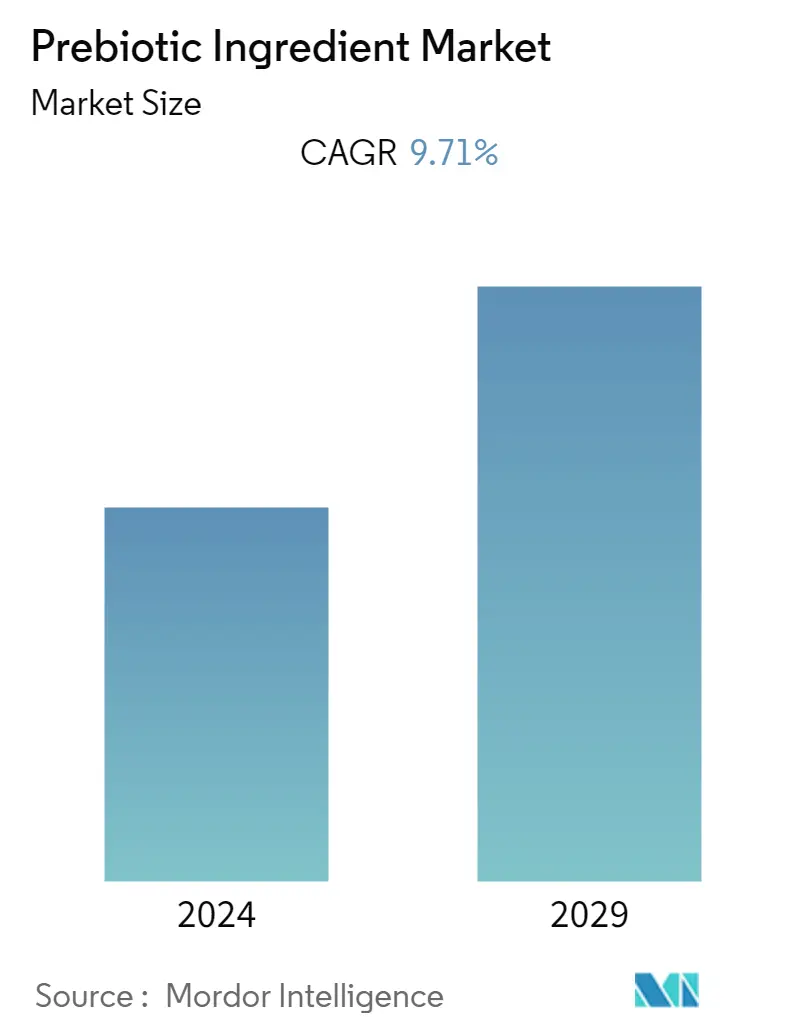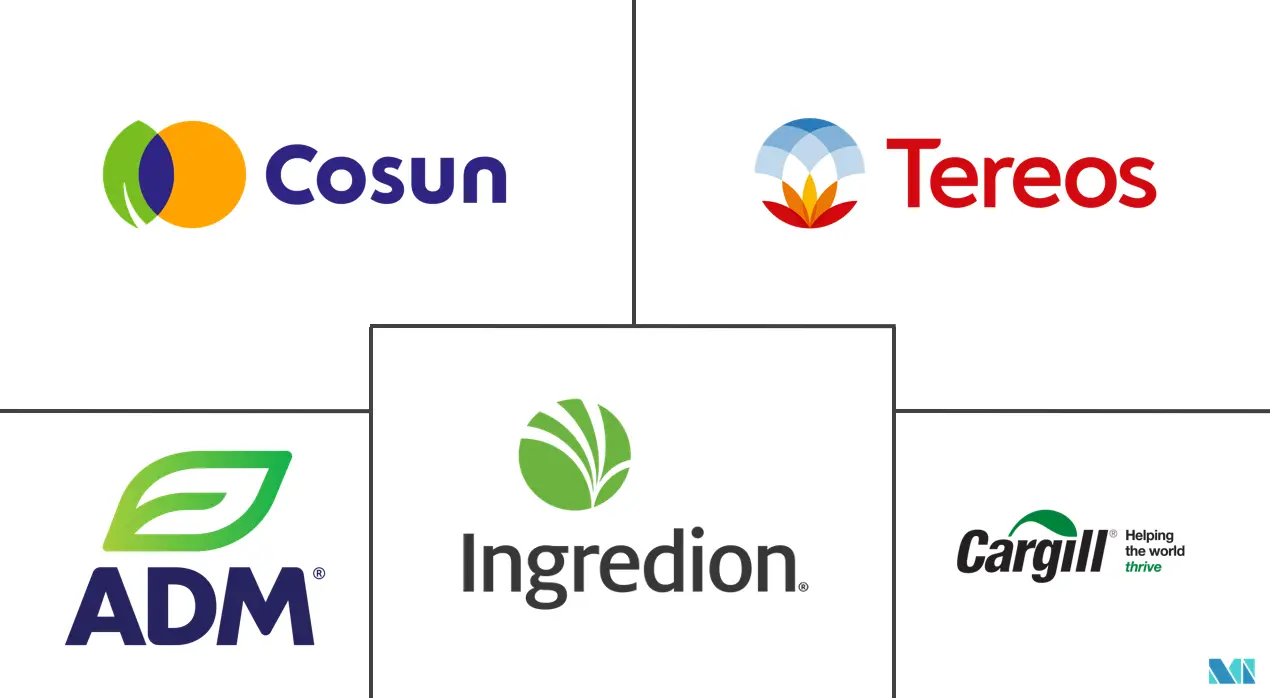Market Size of Prebiotic Ingredient Industry

| Study Period | 2019 - 2029 |
| Base Year For Estimation | 2023 |
| CAGR | 9.71 % |
| Fastest Growing Market | Latin America |
| Largest Market | Europe |
| Market Concentration | Low |
Major Players
*Disclaimer: Major Players sorted in no particular order |
Need a report that reflects how COVID-19 has impacted this market and its growth?
Prebiotic Ingredients Market Analysis
The prebiotic ingredient market is projected to register a CAGR of 9.71% over the next five years.
Prebiotic substances have a wide range of uses, from animal feed to nutritional supplements and food processing. There have been numerous product releases in various end-user industries as a result of growing public awareness of their advantage serous product releases in various end-user industries as a result of growing public awareness of their advantages. This has significantly accelerated the market under study's expansion. To encourage the growth of prebiotics and enhance their nutritional value, prebiotics are included in many food compositions, particularly dairy products. Kefir, milk, low-fat dairy products, and other dairy-based beverages, including smoothies and yogurt-based dips, particularly those made with Greek yogurt, seemed like good choices for prebiotic fortification. These present a chance for additional fortification, which drives market demand throughout the forecast period.
Foods explicitly marketed for infants between the ages of 2 and 4 are known as "baby foods." Prebiotics are included in a variety of infant and baby food products because infants who consume these supplemented formulas have better stools, lower stool pHs, more frequent stools, and higher bifidobacteria concentrations in their intestines than those who do not. These primarily consist of ready-to-eat foods like squash, purees, and cereal. To meet the growing demand for infant formula and symbiotics worldwide, manufacturers also use galactooligosaccharides (GOS) and fructooligosaccharides (FOS).
Additionally, the increased intake of high-fiber functional foods and prebiotics by the food and beverage industry is linked to benefits such as improved digestion, a lower stress response, better hormonal balance, and a decrease in cardiovascular diseases, which is creating a pull globally. However, lack of product visibility, the high cost involved in the research and development of ingredients, and stringent regulations for the registration and labeling of new prebiotic ingredients in the United States and Europe are likely to restrict the growth of prebiotics to some extent.
